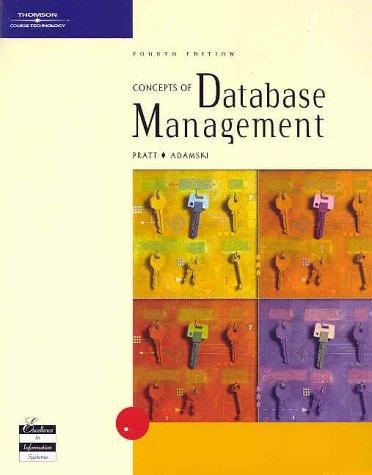Question
#include using namespace std; // Global constants const int ROWS = 3; // The number of rows in the array const int COLS = 3;
#include
using namespace std;
// Global constants
const int ROWS = 3; // The number of rows in the array
const int COLS = 3; // The number of columns in the array
const int MIN = 1; // The value of the smallest number
const int MAX = 9; // The value of the largest number
// Function prototypes
void showResult(int[][COLS]);
void showArray(int[][COLS]);
bool isMagicSquare(int[][COLS]);
bool checkRange(int[][COLS]);
bool checkUnique(int[][COLS]);
bool checkRowSum(int[][COLS]);
bool checkColSum(int[][COLS]);
bool checkDiagSum(int[][COLS]);
int main()
{
// Create a magic two-dimensional array.
int magicArray[ROWS][COLS] = { {4, 9, 2},
{3, 5, 7},
{8, 1, 6} };
// Create a normal two-dimensional array.
int normalArray[ROWS][COLS] = { {10, 2, 3},
{4, 15, 6},
{7, 8, -8} };
// NOTE: Feel free to create additional 2D arrays to test
// Display the normal array.
showArray(normalArray);
// Test the normal array and display the result.
showResult(normalArray);
// Display the magic array.
showArray(magicArray);
// Test the magic array and display the result.
showResult(magicArray);
system("PAUSE");
return 0;
}
// ********************************************************
// The showResult function accepts a two-dimensional int *
// array as an argument, tests to determine if it is a *
// Lo Shu Magic Square and displays the result. *
// ********************************************************
void showResult(int values[][COLS])
{
// Determine if the array is a Lo Shu Magic Square.
if (isMagicSquare(values))
{
// If so, display a message indicating that the
// array is a magic square.
cout << "This is a Lo Shu magic square. ";
}
else
{
// If not, display a message indicating that the
// array is not a magic square.
cout << "This is not a Lo Shu magic square. ";
}
}
// ********************************************************
// The showArray function accepts a two-dimensional int *
// array as an argument and displays its contents. *
// ********************************************************
void showArray(int values[][COLS])
{
// Step through all the values in the array.
for (int row = 0; row < ROWS; row++)
{
for (int col = 0; col < COLS; col++)
{
// Display the values in this row.
cout << values[row][col] << " ";
}
// End the line, so we can display the next row.
cout << endl;
}
}
// ********************************************************
// The isMagicSquare function accepts a two-dimensional *
// int array as an argument, and returns true if the *
// array meets all the requirements of a magic square. *
// Otherwise, it returns false. *
// ********************************************************
bool isMagicSquare(int values[][COLS])
{
// ----- IMPLEMENT THIS -----
// ----- IMPLEMENT THIS -----
// ----- IMPLEMENT THIS -----
// ----- IMPLEMENT THIS -----
// ----- IMPLEMENT THIS -----
}
// ********************************************************
// The checkRange function accepts a two-dimensional int *
// array as an argument, and returns true if the values *
// are within the specified range (1- 9). Otherwise, it returns *
// false. *
// ********************************************************
bool checkRange(int values[][COLS])
{
// ----- IMPLEMENT THIS -----
// ----- IMPLEMENT THIS -----
// ----- IMPLEMENT THIS -----
// ----- IMPLEMENT THIS -----
// ----- IMPLEMENT THIS -----
}
// ********************************************************
// The checkUnique function accepts a two-dimensional int *
// array as an argument, and returns true if the values *
// in the array are unique. Otherwise, it returns false (if there are
duplicates). *
// ********************************************************
bool checkUnique(int values[][COLS])
{
// ----- IMPLEMENT THIS -----
// ----- IMPLEMENT THIS -----
// ----- IMPLEMENT THIS -----
// ----- IMPLEMENT THIS -----
// ----- IMPLEMENT THIS -----
}
// ********************************************************
// The checkRowSum function accepts a two-dimensional *
// int array as an argument, and returns true if the sum *
// of the values in each of the array's rows are equal. *
// Otherwise, it returns false. *
// ********************************************************
bool checkRowSum(int values[][COLS])
{
// ----- IMPLEMENT THIS -----
// ----- IMPLEMENT THIS -----
// ----- IMPLEMENT THIS -----
// ----- IMPLEMENT THIS -----
// ----- IMPLEMENT THIS -----
}
// ********************************************************
// The checkColSum function accepts a two-dimensional *
// int array as an argument, and returns true if the sum *
// of the values in each of the array's columns are *
// equal. Otherwise, it returns false. *
// ********************************************************
bool checkColSum(int values[][COLS])
{
// ----- IMPLEMENT THIS -----
// ----- IMPLEMENT THIS -----
// ----- IMPLEMENT THIS -----
// ----- IMPLEMENT THIS -----
// ----- IMPLEMENT THIS -----
}
// ********************************************************
// The checkDiagSum function accepts a two-dimensional *
// int array as an argument, and returns true if the sum *
// of the values in each of the array's diagonals are *
// equal. Otherwise, it returns false. *
// ********************************************************
bool checkDiagSum(int values[][COLS])
{
// ----- IMPLEMENT THIS -----
// ----- IMPLEMENT THIS -----
// ----- IMPLEMENT THIS -----
// ----- IMPLEMENT THIS -----
// ----- IMPLEMENT THIS -----
}
Annotations
Step by Step Solution
There are 3 Steps involved in it
Step: 1

Get Instant Access to Expert-Tailored Solutions
See step-by-step solutions with expert insights and AI powered tools for academic success
Step: 2

Step: 3

Ace Your Homework with AI
Get the answers you need in no time with our AI-driven, step-by-step assistance
Get Started


